The Year of German-American Friendship
Road Trip for Friendship
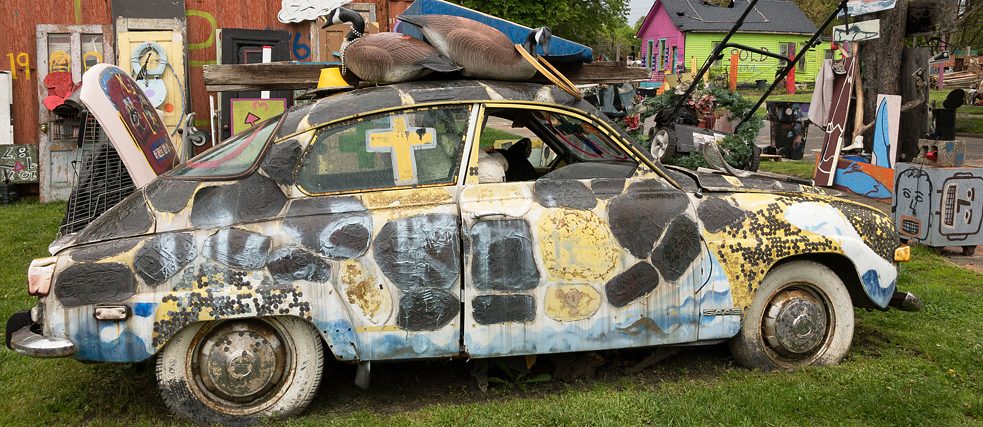
Unfamiliar views of the land of opportunity: “Typical America” is far from the coastal cities. Detroit even has a special connection to Berlin. The Year of Germany in the USA presents the longstanding friendship from forgotten perspectives.
By Juliane Schäuble (The full article appeared in Der Tagesspiegel on 15 June 2019)
Sometimes, timing is everything. We constantly hear that it’s mere coincidence that the Year of Germany in the USA is taking place at a time characterised by the new guy in the White House whose policies irritate many Europeans. But even if that’s true, at least it’s happy coincidence. Because according to secretary-general of the Goethe-Institut Johannes Ebert, the purpose of this year is to look beyond Washington and the coastal cities that transatlantic organisations commonly focus on for a closer look at “typical America.”
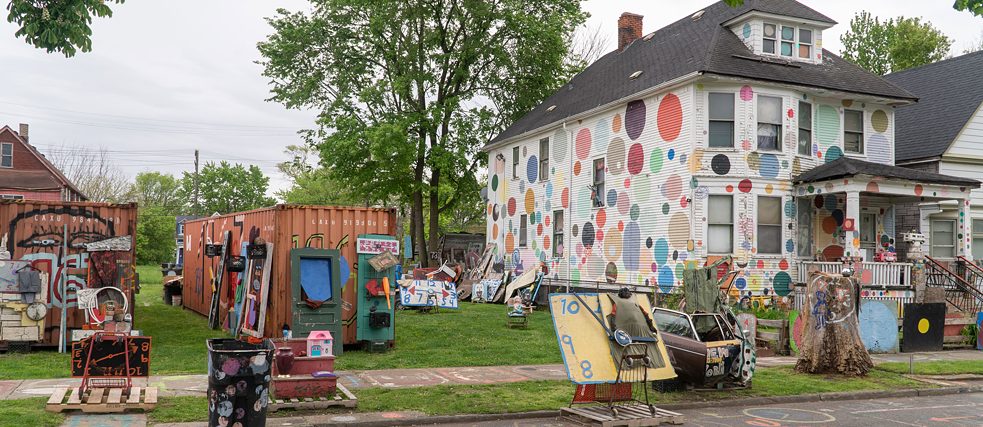 The painted facades on Heidelberg Street as well as the entire Detroit art scene are an important sign of Detroit's breakthrough
| Photo: Marcus Sporkmann
The painted facades on Heidelberg Street as well as the entire Detroit art scene are an important sign of Detroit's breakthrough
| Photo: Marcus Sporkmann
CITIES IN TRANSITION
Some cities don’t have to reinvent themselves. They’re simple: attractive, successful, unique. Others, however, urgently need to do something, for example, because the basis of livelihoods has disappeared or simply because the world has changed. Berlin is one of these cities. When the wall came down, everything was suddenly different – and everything was possible.Detroit is another such city. No wall fell here, but the industry that shaped and brought wealth to this Midwestern city in the first half of the twentieth century has largely disappeared. The once-booming American auto industry, which gave Detroit the name Motor City, faltered at the end of the twentieth century. Companies were closed; residents moved away, especially those who could afford it. What remained were decaying buildings and disillusioned people; Detroit became synonymous with the dangerous American inner city. The best-known building was the former railway station in the southwest, a lone-standing ruin that no one but photographers could do anything with for decades. But recently Ford headquarters moved in and it is now being renovated, the little park in front of it looks nicely kept again, and soon the global centre for autonomous vehicles will reside here – “signs of a new era,” as Detroit urban development expert Larry Flint says.
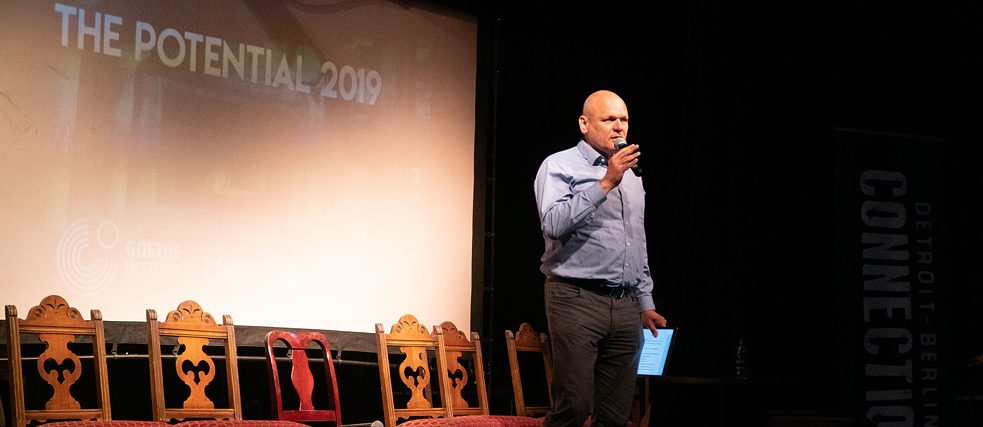 Secretary-general Johannes Ebert during “The Potential” conference from Detroit-Berlin Connection
| Photo: Marcus Sporkmann
Secretary-general Johannes Ebert during “The Potential” conference from Detroit-Berlin Connection
| Photo: Marcus Sporkmann
The Sound of the City
In other ways, the mood has been changing in Detroit for a few years now, and some of that has something to do with Berlin. More specifically, with people like Dimitri Hegemann, the cultural manager who founded Tresor Club and Kraftwerk Berlin, and also the Detroit-Berlin Connection, which just met for the sixth time for its conference The Potential in Detroit. The theme was Urban Development and the Nighttime Economy. Techno was once exported from Detroit to Berlin and helped the city after the fall of the Wall, says Hegemann. “The music inspired young people to dare to do something new.” Now the Berliners want to help the Detroiters to make more of their creative potential because it’s remarkable, especially with regards to music. Motown (short for Motor Town, but also for the label Motown Records) is home to world stars like Aretha Franklin. An exhibition about the soul singer who died in 2018 is presently being shown at the Detroit Institute of Arts.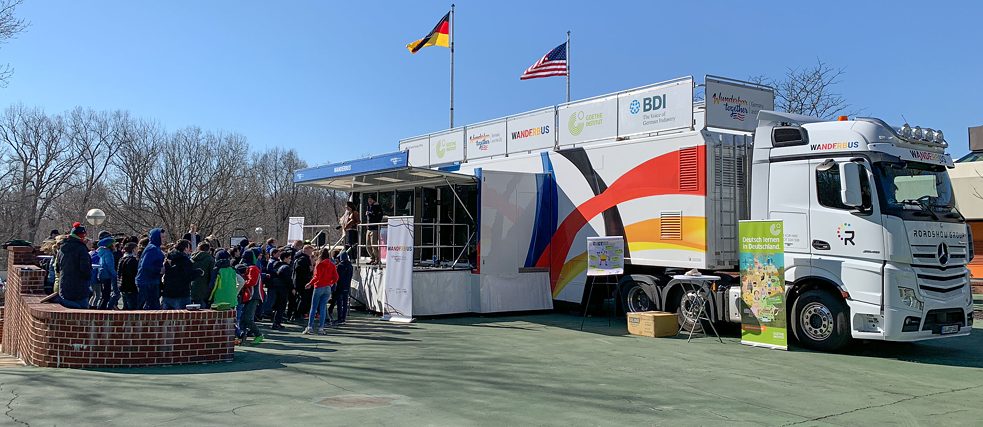 The “WanderbUS” is presently travelling American highways
| Photo: Goethe-Institut Washington
The “WanderbUS” is presently travelling American highways
| Photo: Goethe-Institut Washington
Goethe POP UP
There are six Goethe-Institutes throughout the USA, in places such as Washington, New York or Chicago. During the Year of German-American Friendship, four temporary institutes will be added: in Houston, Kansas City, Minneapolis and Seattle. The aim is to promote the German language and culture away from the "headquarters" and to establish new, lasting links with civil society. In the "jazz city" of Kansas City, Unesco City of Music since two years, Goethe Pop Up has moved into a former juice shop in the art district. Visitors can use German-language books and media, meet at book clubs and film screenings of German classics or, since the end of May, also try out the "Virtual Bauhaus" - to celebrate its 100th anniversary.
EDUCATION AND CLIMATE
When hundreds of pupils alternately debate hotly and listen intently, there’s a high likelihood that it’s about a mega-topic. When the Year of Germany was planned, climate activist Greta Thunberg was still an unknown Swedish schoolgirl. So the organisers were all the more overjoyed that their three-day Sustainability Summit at Loyola University in Chicago in late May coincided with the climax of the Fridays for Future movement. The young people travelled from all over the nation to learn more about climate change in “Future Workshops,” experimental workshops and podium discussions. They also learned about how its consequences can be mitigated, for example based on the question “How will we travel without CO2?”Since all this can be better understood with in-depth knowledge, the Goethe-Institut simultaneously opened the American spin-off of its Digital Children’s University: even the youngest of the curious can learn playfully about the natural sciences online from the animated figures Frau Schlau and Professor Einstein.
Those who still didn’t have their fill of learning in Chicago could take a look inside the WanderbUS, which is travelling the American highways in the Year of Germany. The goal is clearly promotional: to pique the interest of anyone who enters the bus for German-American dialogue. Tablets and virtual reality goggles can be used to explore Germany and its language. After the stopover in Chicago, it journeyed on. After all, by the end of the year the WanderbUS is scheduled to stop in about 60 US cities. And the country is big.
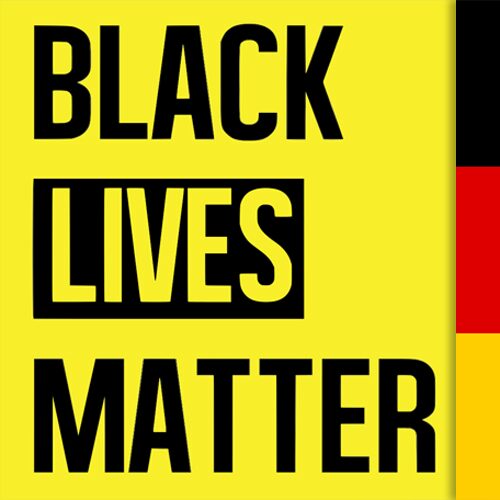 “Black Lives Matter”
| Photo: Marcus Sporkmann
“Black Lives Matter”
| Photo: Marcus Sporkmann